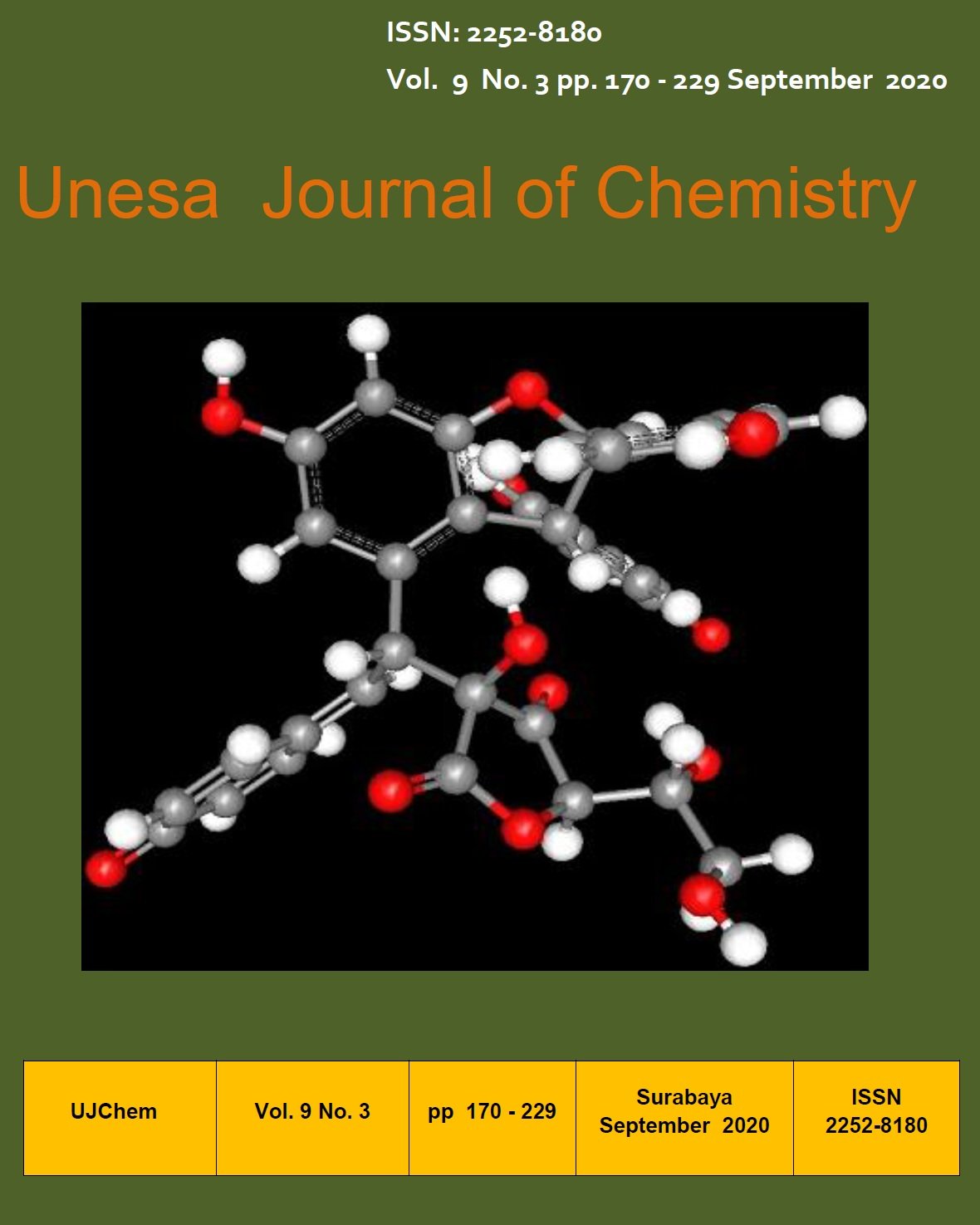SINTESIS DAN KARAKTERISASI HIDROKSIAPATIT DARI TULANG SAPI (Bos taurus) MENGGUNAKAN TEKNIK KALSINASI SYNTHESIS AND CHARACTERIZATION OF HYDROXYAPATITE FROM COW BONES (Bos Taurus) USING CALCINATION TECHNIQUES
Main Article Content
Abstract
Tulang sapi memiliki kandungan hidroksiapatit cukup tinggi, sehingga berpotensi sebagai prekursor material dalam sintesis hidroksiapatit. Tulang sapi memiliki komposisi anorganik yang terdiri dari 93% hidroksiapatit dan 7% ?-TCP. Hidroksiapatit merupakan biomaterial dengan struktur heksagonal yang dapat dimanfaatkan sebagai implan tulang. Penelitian ini bertujuan untuk mengetahui hasil karakterisasi secara kimia (gugus fungsional dan fasa) maupun fisika (kristalinitas) sintesis hidroksiapatit dari tulang sapi. Tulang sapi dipreparasi dengan cara direbus, dicuci dengan aquades, lalu direndam dengan larutan H2O2 selama 5 jam sehingga dihasilkan tulang sapi bebas lemak berwarna putih. Hidroksiapatit diperoleh dari hasil kalsinasi tulang sapi menggunakan furnace dengan suhu 900?C selama 6 jam. Kalsinasi dilakukan dengan tujuan untuk mendapatkan hidroksiapatit dari tulang sapi dan untuk menghilangkan senyawa organik yang tidak dibutuhkan dalam tulang manusia. Rendemen yang dihasilkan pada proses kalsinasi sebesar 83,41%. Hidroksiapatit yang dihasilkan dikarakterisasi kimia dengan instrumen FT-IR menunjukkan adanya gugus fungsi OH-, PO43-, dan CO32-, dimana gugus-gugus tersebut merupakan ciri yang dimiliki oleh hidroksiapatit. Pada instrumen XRD menunjukkan adanya fasa hidroksiapatit dan fasa apatit karbonat. Fasa apatit karbonat tersebut tidak membahayakan tulang manusia disebabkan tulang manusia juga terdiri atas komposisi anorganik karbonat. Hidroksiapatit dikarakterisasi fisika menunjukkan derajat kristalinitas sebesar 95%. Hidroksiapatit memiliki kristalinitas yang tinggi karena memiliki struktur yang rapat dan pori yang kecil.
Kata kunci : Tulang sapi, hidroksiapatit, kalsinasi
Cow bone has a high hydroxyapatite composition, so it can be determined as a preliminary material in the synthesis of hydroxyapatite. Cow bone has an inorganic composition consisting of 93% hydroxyapatite and 7% (?-TCP). Hydroxyapatite is a biomaterial with a hexagonal structure that can be utilized as a bone implant. This research aims to study the results of chemical characterization (functional groups and phases) and physics (crystallinity) of hydroxyapatite synthesis from cow bones. Cow bones are prepared by boiling, replaced with distilled water, then soaked with a solution of H2O2 for 5 hours so that the resulting cow bone is free of white fat. Hydroxyapatite is obtained from the calcination of cow bones using a furnace at 900?C for 6 hours. Calcination is done to get hydroxyapatite from cow bones and to eliminate organic compositions that are not needed in human bones. The yield produced in the calcination process is 83.41%. Hydroxyapatite produced was chemically characterized by FT-IR instruments showing the presence of OH-, PO43-, and CO32- functional groups, whereas these groups were by the characteristics provided by hydroxyapatite. On the XRD intruments shows the presence of the hydroxyapatite phase and the apatite carbonate phase. This carbonate apatite phase does not contain human bones because human bones also consist of an inorganic carbonate composition. Hydroxyapatite characterized by physics shows a degree of crystallinity of 95%.
Key words: Cow bone, hydroxyapatite, calcination

